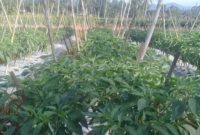A surface drip irrigation line will apply water to the soil surface, allowing it to sink slowly down to the root of the plant. A subsurface drip irrigation line, on the other hand, will target the plant’s root zone directly, having been either temporarily or permanently buried.

Advantages/Pros of Drip line Irrigation
- Water is used at maximum optimum level.
- As water is applied locally and leaching is reduced, fertilizer/nutrient loss is minimized.
- Weeds cannot absorb water as no water is available for them and thus grow in less number
- Crop yield is maximum
- Fertilizers can be used with high efficiency.
- Minimum operating cost
- No soil erosion
- Soil infiltration capacity is increased.
- Fertilizers and ground water is not mixed.
- Seed germination is improved.
- We can use recycled water safely.
- It is not necessary to level the fields.
- We can irrigate water in irregular shaped lands.
- Waste of fertilizers is reduced by 50%
- Energy cost is reduced as it is operated in lower pressure than other irrigation methods.
Disadvantages/Cons of Drip line Irrigation
- Initial cost is high.
- May cause clogging if water is not filtered correctly.
- Problems in moisture distribution.
- Salinity problem.
